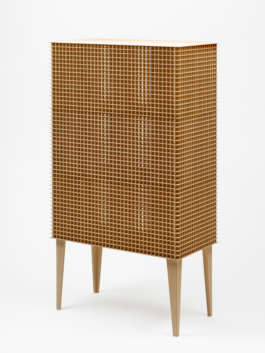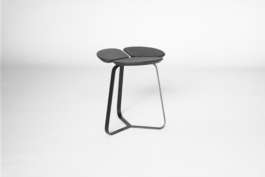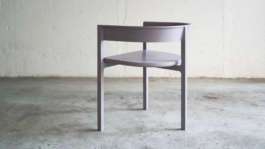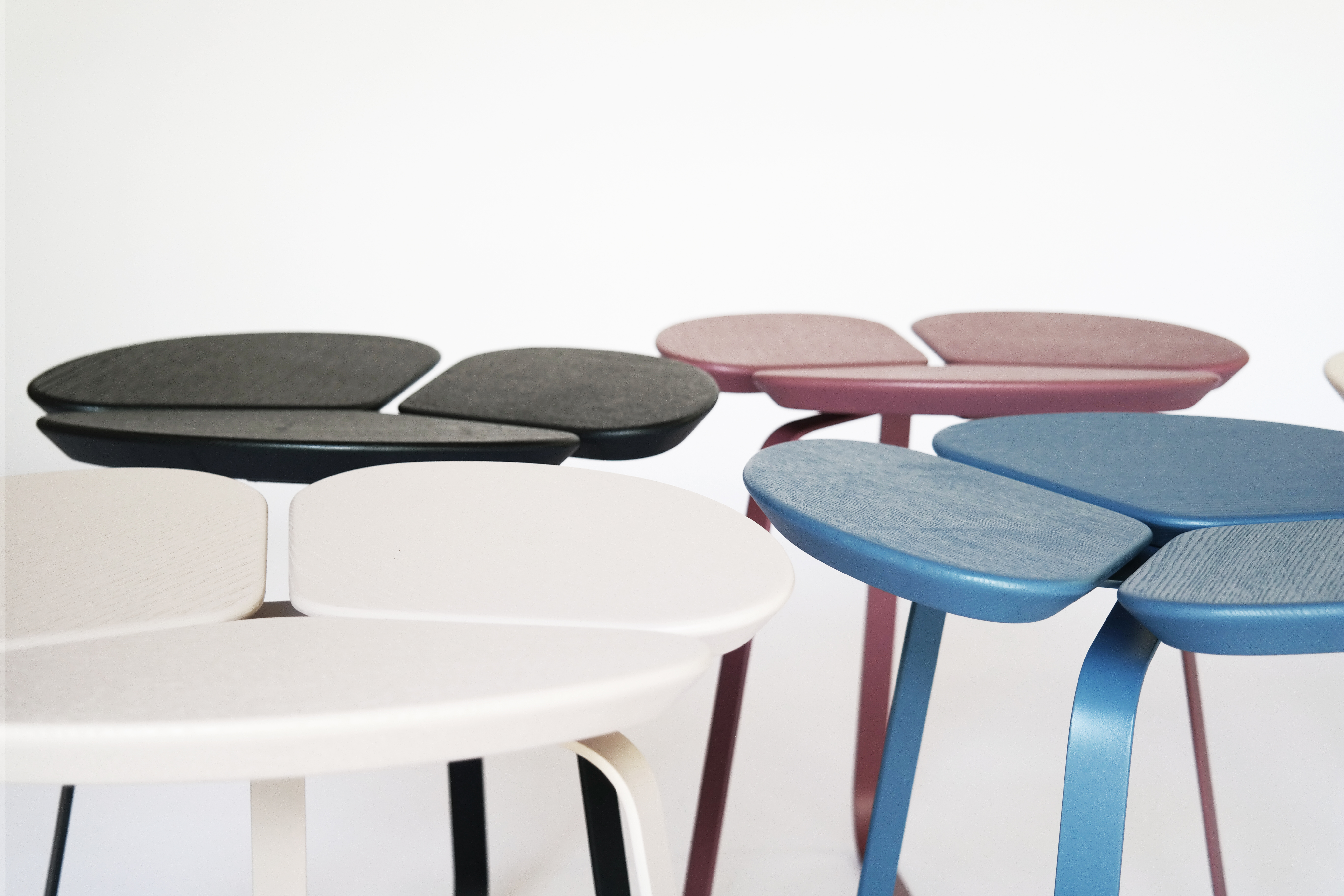



Gunther Pfeffer, Raster, 2022. © Gunther Pfeffer
COLLECTIBLE In-Depth
Danner-Foundation
April 2024
This series, COLLECTIBLE In-Depth, unveils the backstage of contemporary creation. Tackling various topics from personal designer processes to the position of collectible design on the global design market, COLLECTIBLE In-Depth offers different views to suit all tastes. Today we speak with Markus Eder from Danner-Foundation.
COLLECTIBLE: How can collectible design be a representation or reaction to the current societal, political or economic questions?
Markus Eder: My objects are preceded by an extensive concept phase. These are often based on the observation of society, our living habits and the influence that production has on the environment. Questioning and rethinking play a major role in my design process.
C: Can you talk about the designers you present at COLLECTIBLE this year, what makes their practice/pieces unique?
ME: The Danner-Foundation welcomes the opportunity to present Gunther Pfeffer a young German artisan and designer who has received the renowned Danner-Prize for artistic crafts in 2023. To restrict oneself to the use of elementary forms, existing patterns and traditional techniques and to simultaneously create furniture by working completely without fittings or glue is a courageous approach that one encounters in late works of established artists rather than in the works of young talents. Made of just one – natural and renewable – material (fir wood), the award-winning cabinet "Grid" (“Raster”) for example consists of hundreds of elements which are mounted to seamlessly interlocking modules that can be partly or even completely disassembled. It is the purpose of the Danner-Foundation to promote and support this type of artistic craftspeople who combine creativity and innovative design with an outstanding command of manual skill.
C: What is the relation you hold with the designers you work with?
ME: The Danner Foundation focuses on the promotion of arts and crafts. We support freelance craftspeople and designers financially and help them to gain more visibility through grants, catalogue sponsorships, exhibition sponsorships or support with investments in materials and tools. Every three years since 1984 the Foundation is awarding the Danner-prize for outstanding achievements in arts and craftsmanship. The competition promotes new creative ideas and developments in arts and crafts.
C: Can you talk about a new piece / collection that you release for COLLECTIBLE this year?
ME: Object “Raster”, showcase
This piece, consisting of high stacked fine baskets made of fir-wood, becomes special through its delicate shell which only becomes transparent in orthogonal axes. With changeing the viewing angle, the shell closes and the strictly geometric grid remains visible. A showcase that only reveals its contents to those who accept the challenge to deal with the object. Who are searching for what lies behind. The aim of the object is to increase the value of content and make the view of it something special. We live in a time when many things are immediately available, visible. Everything is becoming more fast-paced, more interchangeable. Taking time for special things, occupying oneself with them, is becoming the exception. Calmness, childlike curiosity and the urge to explore make objects visible to those who earn it by actively engaging with the environment, the surrounding space. The object closes itself off to quick glances. It is solely made of fir wood – a natural and renewable material and consists of hundreds of elements which are mounted to seamlessly interlocking modules that can be partly or even completely disassembled.
C: What are the key questions you ask yourself before starting to conceptualize a new piece?
ME: It always starts with the idea of a specific theme. This can arise from a wide variety of influences such as society, the environment and materials. Making this theme tangible in its entirety is the essential task in the design process.
C: What is your favorite material?
ME: As a trained carpenter, I am very attached to wood as a natural material. Wood can do an incredible amount and has endless possibilities. Exploring these and using them further is an exciting field.

Gunther Pfeffer, blattwerk, 2022. © Gunther Pfeffer

Gunther Pfeffer, dune, 2023 © Gunther Pfeffer

Gunther Pfeffer, blattwerk, 2022. © Gunther Pfeffer

Gunther Pfeffer, Raster, 2022. © Gunther Pfeffer
COLLECTIBLE In-Depth
Danner-Foundation
April 2024
This series, COLLECTIBLE In-Depth, unveils the backstage of contemporary creation. Tackling various topics from personal designer processes to the position of collectible design on the global design market, COLLECTIBLE In-Depth offers different views to suit all tastes. Today we speak with Markus Eder from Danner-Foundation.
COLLECTIBLE: How can collectible design be a representation or reaction to the current societal, political or economic questions?
Markus Eder: My objects are preceded by an extensive concept phase. These are often based on the observation of society, our living habits and the influence that production has on the environment. Questioning and rethinking play a major role in my design process.
C: Can you talk about the designers you present at COLLECTIBLE this year, what makes their practice/pieces unique?
ME: The Danner-Foundation welcomes the opportunity to present Gunther Pfeffer a young German artisan and designer who has received the renowned Danner-Prize for artistic crafts in 2023. To restrict oneself to the use of elementary forms, existing patterns and traditional techniques and to simultaneously create furniture by working completely without fittings or glue is a courageous approach that one encounters in late works of established artists rather than in the works of young talents. Made of just one – natural and renewable – material (fir wood), the award-winning cabinet "Grid" (“Raster”) for example consists of hundreds of elements which are mounted to seamlessly interlocking modules that can be partly or even completely disassembled. It is the purpose of the Danner-Foundation to promote and support this type of artistic craftspeople who combine creativity and innovative design with an outstanding command of manual skill.
C: What is the relation you hold with the designers you work with?
ME: The Danner Foundation focuses on the promotion of arts and crafts. We support freelance craftspeople and designers financially and help them to gain more visibility through grants, catalogue sponsorships, exhibition sponsorships or support with investments in materials and tools. Every three years since 1984 the Foundation is awarding the Danner-prize for outstanding achievements in arts and craftsmanship. The competition promotes new creative ideas and developments in arts and crafts.
C: Can you talk about a new piece / collection that you release for COLLECTIBLE this year?
ME: Object “Raster”, showcase
This piece, consisting of high stacked fine baskets made of fir-wood, becomes special through its delicate shell which only becomes transparent in orthogonal axes. With changeing the viewing angle, the shell closes and the strictly geometric grid remains visible. A showcase that only reveals its contents to those who accept the challenge to deal with the object. Who are searching for what lies behind. The aim of the object is to increase the value of content and make the view of it something special. We live in a time when many things are immediately available, visible. Everything is becoming more fast-paced, more interchangeable. Taking time for special things, occupying oneself with them, is becoming the exception. Calmness, childlike curiosity and the urge to explore make objects visible to those who earn it by actively engaging with the environment, the surrounding space. The object closes itself off to quick glances. It is solely made of fir wood – a natural and renewable material and consists of hundreds of elements which are mounted to seamlessly interlocking modules that can be partly or even completely disassembled.
C: What are the key questions you ask yourself before starting to conceptualize a new piece?
ME: It always starts with the idea of a specific theme. This can arise from a wide variety of influences such as society, the environment and materials. Making this theme tangible in its entirety is the essential task in the design process.
C: What is your favorite material?
ME: As a trained carpenter, I am very attached to wood as a natural material. Wood can do an incredible amount and has endless possibilities. Exploring these and using them further is an exciting field.

Gunther Pfeffer, blattwerk, 2022. © Gunther Pfeffer

Gunther Pfeffer, dune, 2023 © Gunther Pfeffer
Contact
info@collectible.design
VIP PORTAL
EXHIBITOR PORTAL
PRIVACY POLICY
© 2025 Collectible
Contact
info@collectible.design
VIP PORTAL
EXHIBITOR PORTAL
PRIVACY POLICY
© 2025 Collectible